What material is the best for waterfall countertops? And what is right for your kitchen?
Factoring in cost, ease and overall look, design experts explain the best materials to use for waterfall countertops

The unique nature of a waterfall countertop means you need to choose a surface material carefully. You want the countertop to look like it’s made from one continuous material, so if you are using a natural stone with deep veining, it will need to be bookmatched so the two joined slabs can line up to create the desired pattern, and this will obviously cost more. Because of this a lot of designers use quartz worktops as it’s less expensive and can be flawlessly matched.
In modern kitchens, stone is the most popular for waterfall countertops. 'This is because of the way the veining appears to running down the sides of the island,’ says Alison Lynch, Senior Design Consultant at Roundhouse.
But there are plenty of other options. Wood, corian, quartz, concrete. Read on to work out which is the best for the look you're trying to acheive - and a quick word to the wise before you do: 'Whichever material you choose, ensure the two slabs are the same thickness for continuity,' advises interior designer Alex Main of the Main Company.
There is no doubt about it, a good waterfall countertop is going to cost you. Mainly due to the amount of material you'll need, and especially if you're going to use a natural stone, as each piece is unique.
What materials are the best for waterfall countertops?
1. Quartz or composite finishes
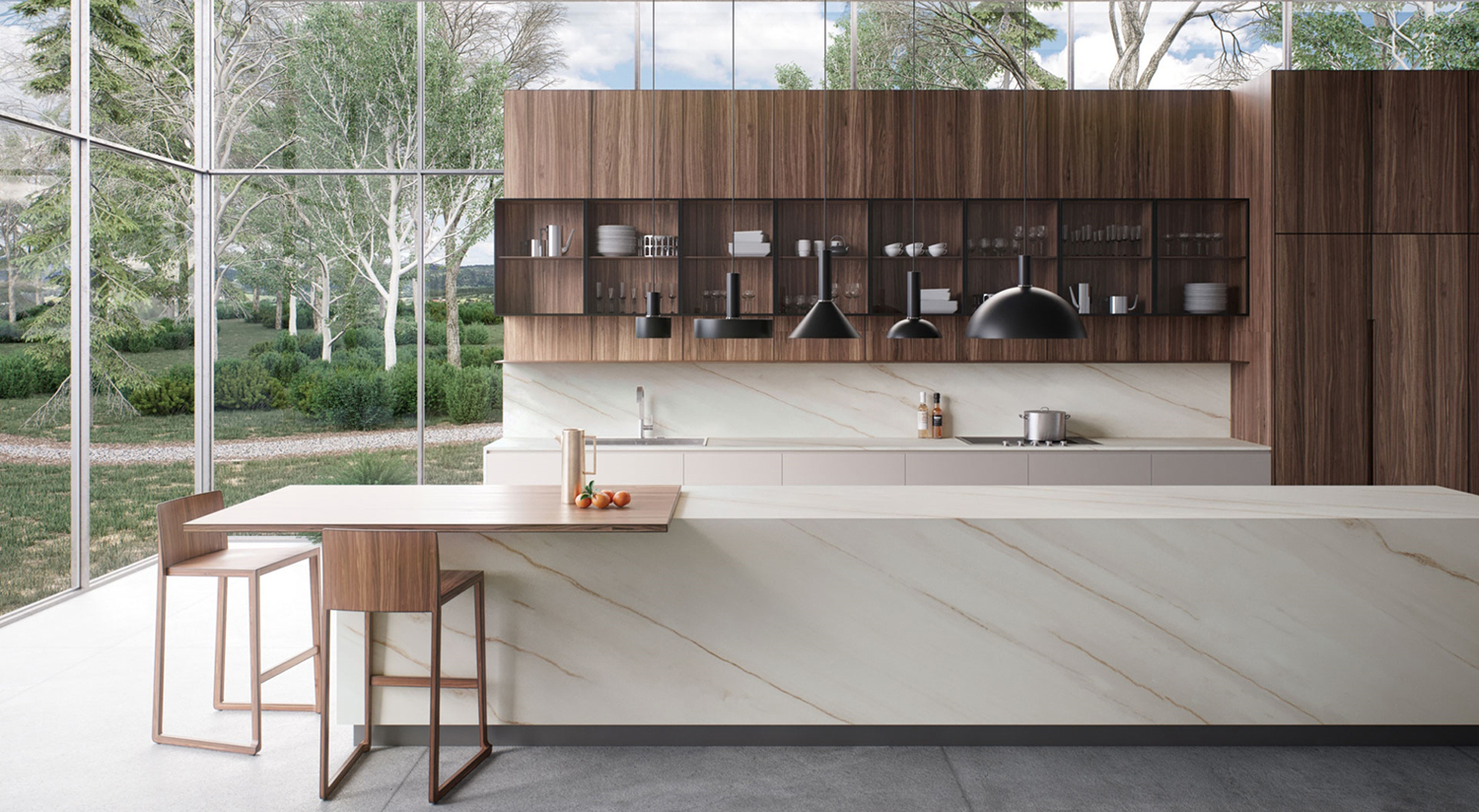
Quartz is a natural mineral, blended with resins and pigments. A lot of designers are using quartz to create waterfall countertops as it’s a more versatile material than natural stone, and less expensive to fabricate. It can be made in a plain finish so it looks like one cohesive material, or faux veining can be added to mimic natural stone. Quartz requires little or no maintenance.
It's also great for waterfall countertops as it's easier than any other material to make it look cohesive from horizontal to vertical surface.
‘The unique profile of a waterfall countertop edge means you need to choose a surface material carefully,’ says Mor Krisher, Head of Design at Caesarstone. ‘You want the countertop to look like it’s made from one continuous material. This is difficult to do with a waterfall countertop island made from wood, marble, granite or any other material that contains natural veining as mismatched veining will ruin the cascading waterfall effect. However, because quartz is designed carefully, it allows you to create a waterfall countertop that looks like one cohesive material. Beyond installation, high-quality quartz is also much more practical for day-to-day-life. The thickness of the slab depends entirely on the profile you want. A chunky countertop looks luxe while a slimmer thickness looks sleek and fits into a more minimalist kitchen aesthetic.’
The thickness of quarts is typically around 2-3 inches - thinner than most other materials, so tends to look a little less luxurious.
2. Wood
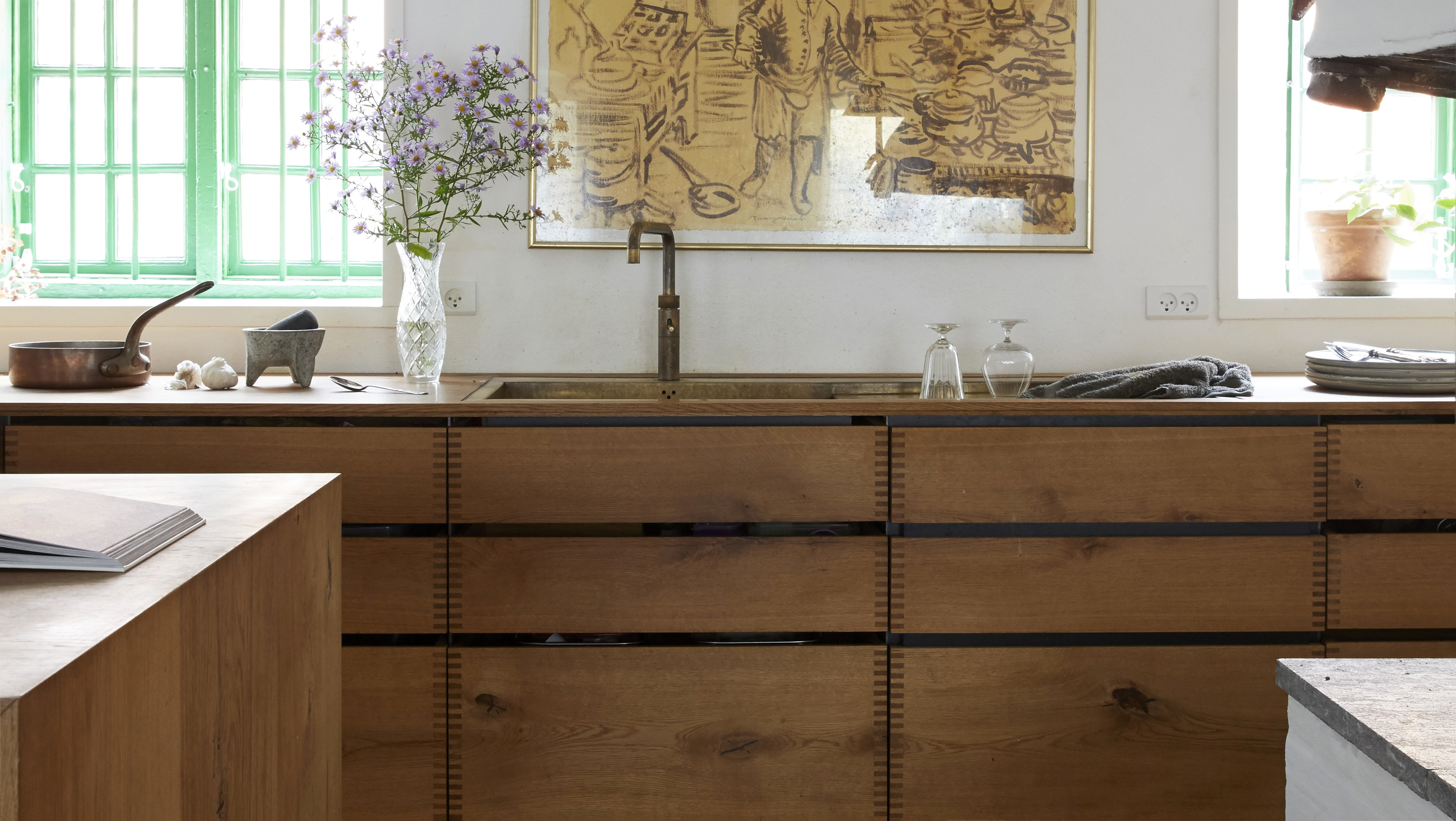
One of the huge benefits of using wood is the natural beauty that it provides - as seen just peeking into the shot above. Each piece reveals its own unique character and markings. ‘Using reclaimed wood for a waterfall countertop creates a new lease of life for the original material and is therefore the ideal choice for an environmentally friendly solution in your kitchen, that doesn’t compromise on style,’ says Alex Main, Director of design studio The Main Company.
‘Natural stone waterfall countertops tend to have a more modern aesthetic whereas, wood offers a more organic, rustic modern farmhouse kitchen-style end result. In addition, over time, the wood surface can be sanded back if it gets stained and is generally a softer, more tactile material to work with. As far as thickness is concerned, this is down to personal preference, but for a luxurious finish, opt for a thicker surface of around 3 inches. For wooden waterfall countertops, the thicker the counter, the more rustic it will look - whereas a thinner countertop will have a more contemporary effect.'
3. Concrete
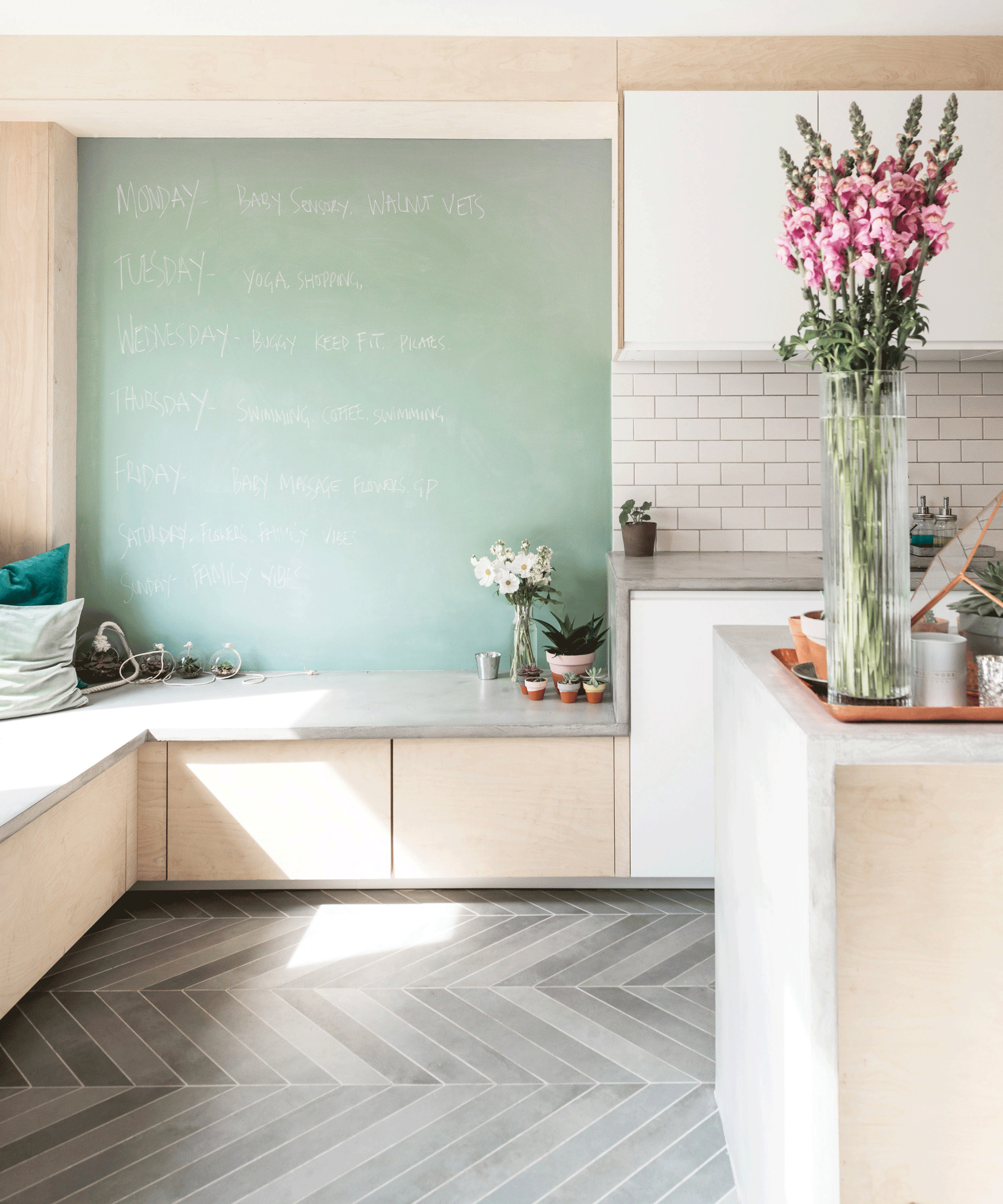
If you want an industrial kitchen vibe - or, actually, a soothing spa-like feel - a concrete waterfall countertop is perfect. ‘There are a number of ways this can be achieved,' explains Anne Balogh of ConcreteNetwork.com. 'It can be cast as one piece so there are no seam lines, or the end pieces can be cast separately from the top.’
It's not without its issues, though, and could leave you wondering when you should use a waterfall countertop and when it's easier not to. ‘Concrete is heavy, so the side panels are often made using glass-fiber-reinforced concrete or constructed of plywood or particle board and then covered in a concrete microtopping,' Anne says. 'The concrete can be etched, acid-stained or stamped, color can be added and decorative embeds such as colored glass or strips of metal can be used.'
The advantages of concrete are how workable - in the right hands - it is. 'Instead of forming the edge at a right angle, it can be formed with a slightly rounded edge for a softer look,' Anne says. 'Or the side panels could be angled to form a geometric shape. It is a very versatile material.’
Because of its heaviness, concrete tends to be thinner...though it doesn't have to. ‘There are no limitations on size for a concrete waterfall countertop but a standard concrete countertop is 1 ½ - 2” thick,’ says Sean Jaegli of Global Surface Solutions. ‘For a thicker look, a drop-front-apron could be added.’
4. Porcelain and Ceramic
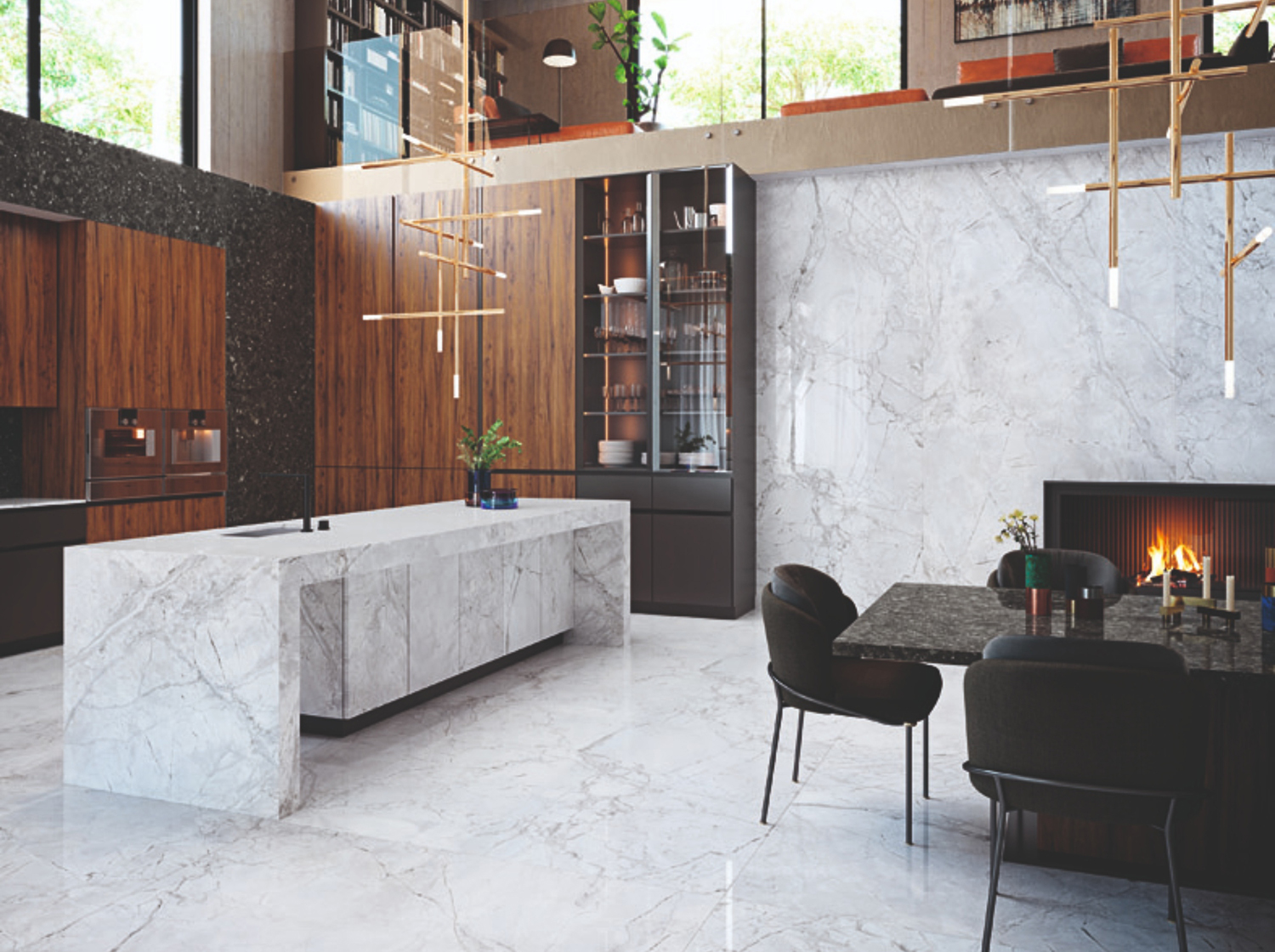
Porcelain and ceramic countertops are both made from natural, raw and clay-based materials which are ground and then finely pulverised before being pressed and fired. They both have outstanding technical properties, and porcelain, in particular, is a super-strong material, and is heat, light, scratch and chemical-resistant. Essentially, they're what this countertop trend was made for.
‘Materials such as quartz and ceramic are ideal for kitchen islands as they offer the best of both worlds in terms of looks and functionality,’ says Simon Boocock, MD of CRL Stone. ‘They are available in marble-inspired styles that can be book matched so that the ends of the waterfall match symmetrically, they are extremely hardwearing, and don’t need sealing.’
To achieve marble and other stone-effects, images of natural stones are taken using digital printing techniques and then printed onto the ceramic and porcelain surfaces. Texture, color and different finishes can also be added. Both materials are non-porous, so stand up to scratches and stains very well.
It is possible to have a much thinner thickness of between 1/2 – ¾ inch thanks to the technology and the strength of the material, so they are both a good choice for a minimal look.
5. Natural stone
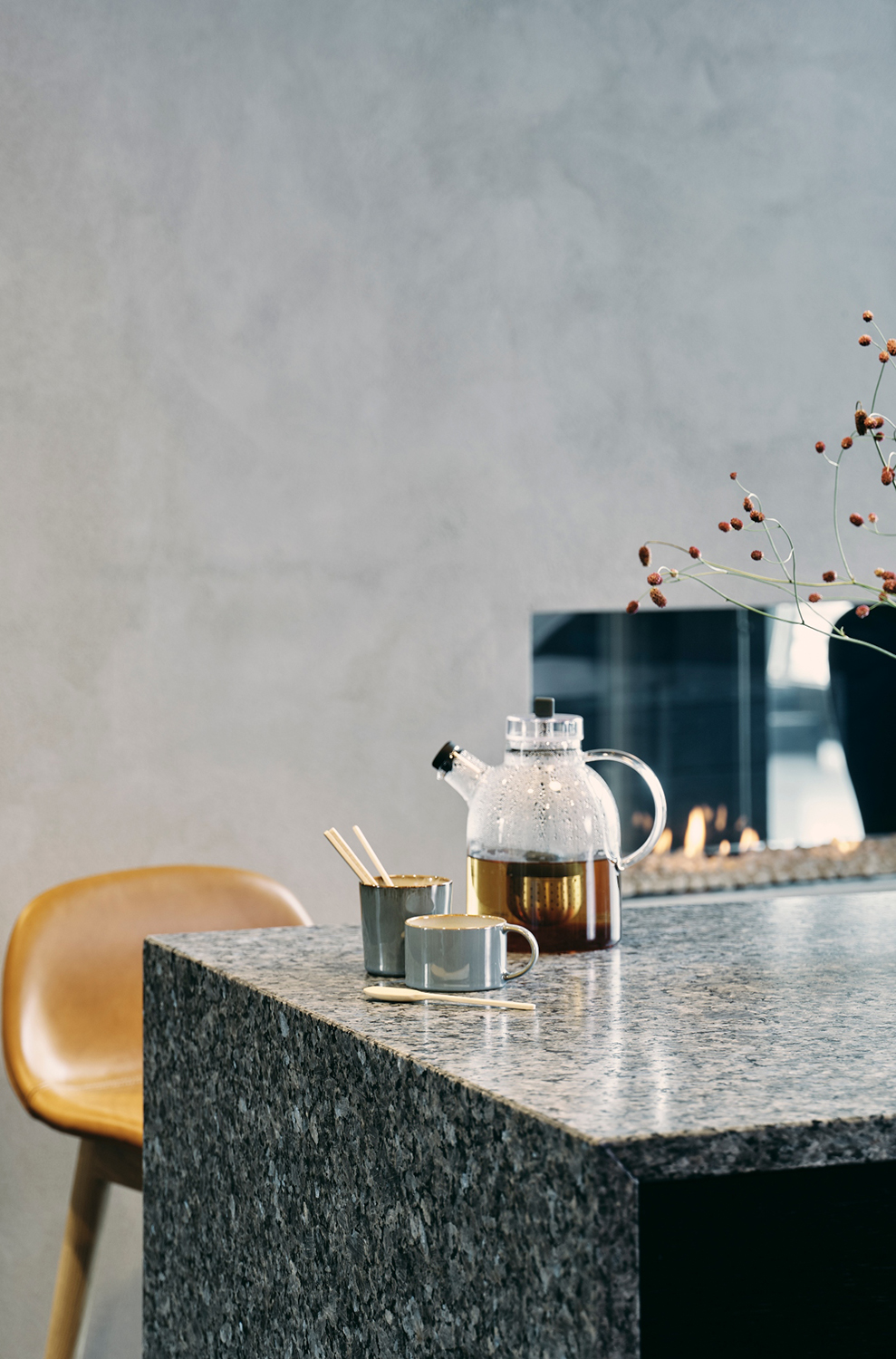
There is nothing to beat the stunning variations, colors and patterns of natural stone, and if you want a dramatic look - and have the money - you won’t regret it. Marble kitchens are going nowhere when it comes to kitchen trends, and will be a timeless investment.
‘For me, it's all about running the vein over the edge and down the side to create a true waterfall, so you must choose something with a vein,’ says Oliver Webb, Director of luxe countertop brand Cullifords. ‘Although you can go plain to create the monolithic block look perhaps. Many waterfalls are done with a miter to the main “falling” edge, which can prove tricky in some materials. We sometimes use a shark nose detail as this not only gives a point of difference, but it can be more forgiving over time should you get some movement as the kitchen settles. It's not easy to do perfectly, but there are some great fabricators out there that who are doing this all the time.”
There is no set thickness for natural stone, although ¾”-1¼” is normal.
Despite its show stopping looks, natural stone will need regular cleaning and will also need to be re-sealed every few years.
The verdict
Obviously it depends on what kitchen aesthetic you're going for. Rustic spaces would look good with wood, modern-luxe with concrete and so on. But in terms of ease of use, ease of maintenance and factoring in the cost, porcelain or ceramic are win out overall when it comes to waterfall countertops.
Be The First To Know
The Livingetc newsletters are your inside source for what’s shaping interiors now - and what’s next. Discover trend forecasts, smart style ideas, and curated shopping inspiration that brings design to life. Subscribe today and stay ahead of the curve.

Alison Davidson is well-respected British interiors journalist, who has been the Homes Editor of Woman and Home magazine, and the Interiors Editor for House Beautiful. She regularly contributes to Livingetc, and many other titles, and often writes about kitchens, extensions, and decor ideas. She is the go-to for information about green energy, sustainable home improvement and eco design ideas.
-
 The 'New British' Style? This Victorian London Home Embraces Its Owners' Global Background
The 'New British' Style? This Victorian London Home Embraces Its Owners' Global BackgroundWarm timber details, confident color pops, and an uninterrupted connection to the garden are the hallmarks of this relaxed yet design-forward family home
By Emma J Page
-
 Muji Living Room Ideas — 5 Ways to Harness The Calming Qualities of This Japanese Design Style
Muji Living Room Ideas — 5 Ways to Harness The Calming Qualities of This Japanese Design StyleInspired by Japanese "zen" principles, Muji living rooms are all about cultivating a calming, tranquil space that nourishes the soul
By Lilith Hudson